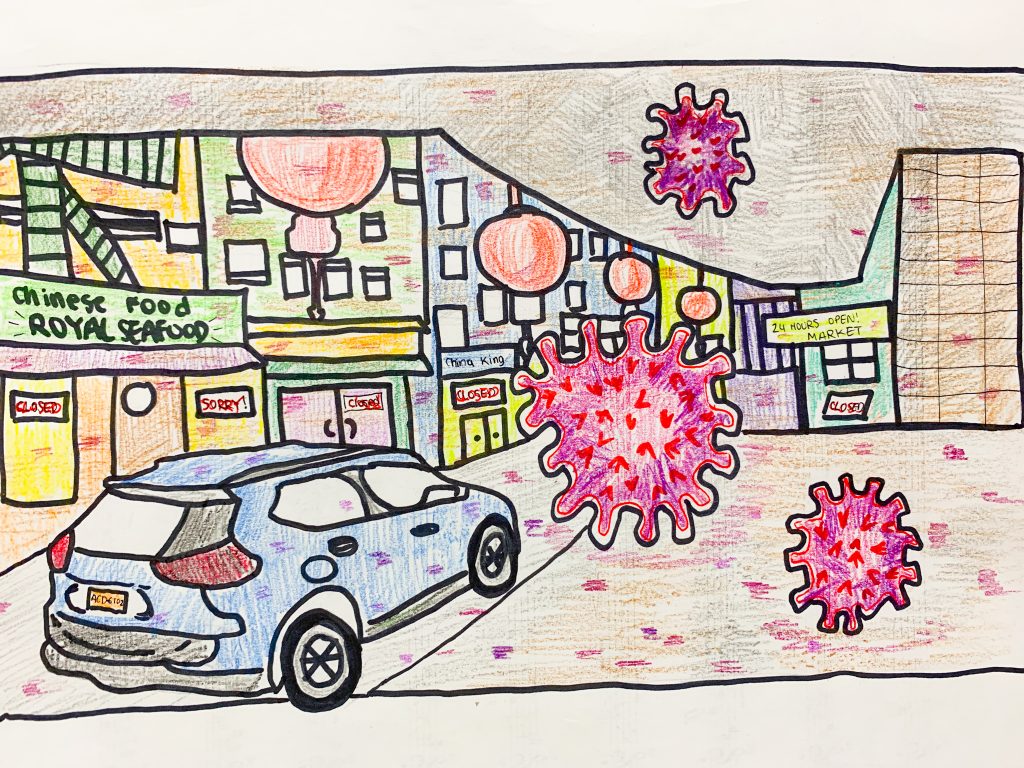On a typical Saturday morning, Jing Fong restaurant in Chinatown, Manhattan is jam packed with people eager to start off their day with dim sum. Despite being able to accommodate 800 people at a time, it always seems impossible to get a table. But on February 8th, the day of the Chinese New Year parade and just a few weeks after the outbreak of the COVID-19 virus, the restaurant was less than half full at peak lunchtime hour. Little did I know that this was much more than just a temporary lull.
Even though I spent my childhood in Ridgewood, Chinatown has always been a very important part of my life. My father grew up in the projects of the Lower East Side in the 1980s, and his stories about his upbringing show how Chinatown’s community has contributed to the opportunities that I have today. But we have both noticed that the neighborhood is changing. “I think you can see how much Chinatown has changed through the different types of restaurants and new luxury condos going up in the lower east side,” he says. And he is more than correct. Old shops and restaurants are closing down in favor of chain bubble tea shops and trendy souvenir stores. Million dollar apartment complexes are popping up two blocks from my grandmother’s apartment in the Alfred E. Smith Public Houses. There is now a Trader Joe’s within walking distance from the Bowery. “Now you have a restaurant selling ramen for $20 a bowl next to a $6 bowl of wonton noodles. You have a high end luxury hotel where Silver Palace dim sum used to be.” In Chinatown, gentrification is at its best.
Even before the coronavirus hit the United States, Chinatown had been suffering great losses because of wrongful anti-Chinese sentiments, and things have only gotten worse. Businesses have been struggling from dramatic decreases in profits, sometimes exceeding 50%. Some locations have even been forced to close their doors for good. Most of these places are decades old and will not be able to bounce back from these extreme deficits. It is heartbreaking to see that fear of COVID-19 is being used to facilitate gentrification. Even beyond downtown Manhattan, incidents of anti-asian sentiment, and stories of people who have used the Coronavirus as an excuse to act upon their prejudice, sometimes violently, are becoming more and more common. I suppose it takes a crisis to uncover the ignorant and divided world that we truly live in.
While the severity of the global health crisis is undeniable, the injustice that has emerged as a side effect is inexcusable. A mixture of fear and fallacies has created inaccurate links between Asian Americans and COVID-19, links that are equally as absurd as purposely avoiding Corona beer. But the consequences go beyond what most people can see or measure with concrete data. Chinatown and other pockets of cultural significance are slowly fading away because of gentrification, and this process has only been expedited by recent circulation of misinformation and xenophobia. These places are the roots of immigrant America, and the next generation should be looking to preserve them even as we move towards the future. To lose these valuable pieces of our history would be tragic, and would be a loss that the world can ill afford.
Sam Ngai
Staff Writer
Graphic: Sunny Rhew


Great article. It’s a really tough time at the moment and I loved the inclusion of your personal connection to everything that’s going on. Xenophobia is not the answer to this pandemic—coming together, helping one another, saving lives, and preventing the spread is.